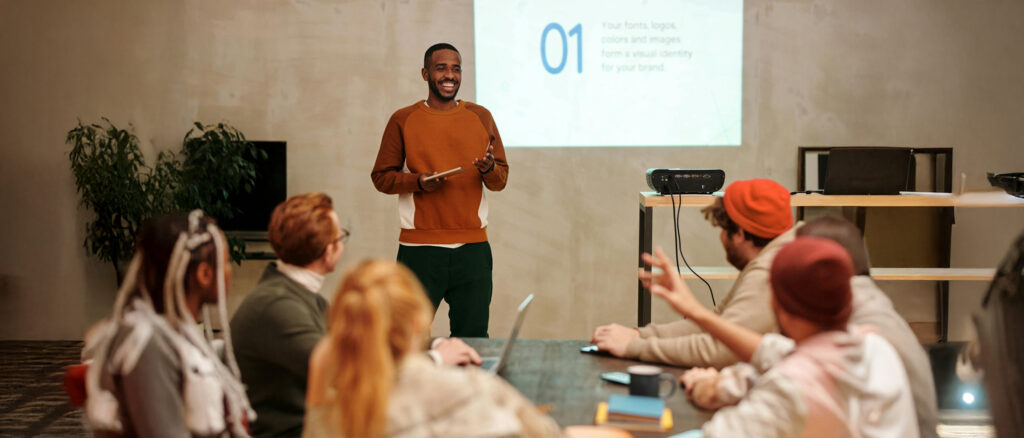Making Connections: Taking green travel mainstream
How can a downtrodden travel industry translate positive consumer sentiment for the green agenda into sector-saving behaviour?
Cast your mind back to those surreal, early weeks of the global shutdown. Look hard enough and somewhere, amid the collective gloom, panic and confusion, momentary cause for optimism could be found.
As travel all but ground to a halt, some visibly recuperative effects on the environment were brought to the world stage through a procession of nitrogen dioxide maps and before-and-after images of iconic locations. They demonstrated for that air quality had – temporarily at least – improved, and gave us a tangible snapshot of what a healthier planet could look like.
Carbon emissions dropped sharply, global heating to a lesser extent. Elsewhere bicycle sales soared and wildlife thrived. New habits were formed. A green travel agenda re-energised.
Now, with travel back to normal, how can the industry ensure that momentum toward ethical, sustainable travel remains a priority? How can changes in the sector be harnessed to accelerate an environmental agenda that remains imperative for future generations?
SHIFTing perceptions of sustainable travel
A key problem facing sustainable travel trailblazers remains: while consumers report favourable attitudes toward pro-environmental behaviours, they often don’t act on them.
The end-game is universally coveted, but the short-term motivators for consumers are largely absent.
In 2019, the American Marketing Association (AMA) designed a ‘SHIFT framework’, exploring the behavioural science at play in nudging consumers to be more sustainable by addressing the “attitude–behaviour gap”.
Through their review of hundreds of the most sourced academic papers on the subject, its authors were able to identify five broad routes to encouraging sustainable behaviour –neatly labelled SHIFT:
Social influence – the effect of social norms, identities and desirability on behaviour
Habit formation – forming new habits is a critical component to behavioural change
Individual self – self-interest and self-concept are powerful behavioural influencers
Feelings and cognition – negative and positive emotions can impact behaviours
Tangibility – the ability, or lack of, to see immediate benefits can affect behaviour
So how might these five core elements be relevant to post-COVID travel? We’ve applied our own thoughts to decades of key thinking to offer some answers…
We hate being pigeon-holed, but like it or not most consumers thrive on the sense of identity which comes from being a member of a group – the in-crowd if you like. We’re more likely to engage in sustainable actions if in-crowd members are doing it too.
Social influence: Engage the in-crowd
The phenomenon of ‘Keeping up with the Joneses’ may be over 100 years old, but there’s nothing dated about the power that perceived ‘social norms’ have on influencing behaviour.
Few things impact our behaviour like the actions and expectations of others, and what we grow to think of as ‘socially appropriate’ typically leads to widespread shifts in public behaviour – think littering, composting, recycling – as the AMA authors chronicle.
We hate being pigeon-holed, but like it or not most consumers thrive on the sense of identity which comes from being a member of a group – the in-crowd if you like. We’re more likely to engage in sustainable actions if in-crowd members are doing it too.
Of course, once part of the ‘sustainable travel’ ingroup, members don’t want to see it outperformed by other groups. Especially those they want no association with.
Travel marketers can use these strong notions of social identity and ingroup identification to their advantage – not only by strengthening allegiances, but even sparking good-natured challenges between competing groups. Competition between cities and areas, businesses and organisations, perhaps, played out without resorting to aggressive, ‘name and shame’ tactics. Rather campaigns that focus on the positives, singling out leading regions (for example in EV take-up) and encouraging their neighbours to catch up.
The AMA paper draws on the power of keeping actions public, in the social eye. Consumers are more likely to act in a ‘socially-desirable’ manner when they know others can see and judge their actions, it notes.
A perfect illustration of this theory at play in wider marketing is the annual Poppy Appeal. People are proud to be associated with the honourable cause – but would the same volume of donations be achieved if this charitable behaviour wasn’t so obviously flagged to others?
Changing habits is tricky. Broadly there are two ways to do it – either by disrupting ‘bad’ habits or reinforcing ‘good’ ones
Habit formation: Use disruption, to disrupt
Habits, by definition, are things we do without much thought. Unfortunately, too many of our most automatic behaviours have a negative impact on the environment. In travel this could mean driving when we could walk, cycle or use public transport. Or choosing to fly domestically, instead of driving or taking the train or coach.
Changing habits is tricky. Broadly there are two ways to do it – either by disrupting ‘bad’ habits or reinforcing ‘good’ ones, the AMA paper notes.
Any disruption to normal life, in which unconscious behaviours are suddenly made more difficult, can create ideal conditions for habitual change. For example, the ban on non-essential road journeys issued during the country’s first national lockdown saw an estimated 200% rise in cycling. When cycle retailers reopened physically, many reported being unable to keep up with the pent-up demand.
While most people initially took up cycling as a mode of transport for the health benefits, they quickly realised the other benefits of green travel. Exploring new sustainable travel options made people realise they didn’t enjoy using cramped public transport, it was just a habit due to lack of better options. After all, it’s difficult to realise how much you dislike doing something until you find a viable alternative.
Now is the time for low-emission vehicle manufacturers (including electric vehicles, bikes, electric scooters and e-bikes) to pounce on circumstance and keep this tide turning. Messaging should focus on the long-term health and environmental benefits associated with sustainable travel.
Triumph is one brand looking to capitalise on habit discontinuity, with its out of home ‘Tubeless Travel’ advert in London. Tubeless Travel plays on the idea that riding a motorcycle is a far more enjoyable alternative to travelling via the London Underground, while the motorcycle highlighted also uses tubeless tyres.
As a brand committed to its own electric future, Triumph’s campaign and crucially the opportunistic way it targets a disruption to pre-conditioned habit is something the wider sector should take note of.
Marketers should never attack those making unsustainable choices but work delicately instead to improve the desirability of more sustainable travel choices.
Individual self: Tweak the ‘traveller’ identity
Each of us has a self-concept. Typically a positive idea of who we are and just as crucially, who we’d like to be seen as. We regularly buy things that help us project this idealised image to the world.
As the AMA points out, change threatens this self-concept. Our strong desire to maintain a positive image of ourselves is matched by the defensive reaction we show upon learning our consumer behaviour has negative side effects.
Someone who, above all else, likes to be seen as a worldly traveller, for example, may well know the negative impact regular air travel has on the environment, but actively avoids sustainable behaviour change and minimises its importance internally.
So. the challenge here is to ‘positively associate sustainable behaviours with the self-concept’. In other words, find ways to make green travel an intrinsic quality of that traveller identity – creating fresh opportunities to target a currently stranded segment.
Marketers should never attack those making unsustainable choices but work delicately instead to improve the desirability of more sustainable travel choices. To recolour pre-conceived connotations of sustainability that to some, remain snobby and condescending, or even hippie-like.
The climate crisis offers a window of opportunity to appeal to those who don’t often make sustainable choices, but may be being forced to, now or in the near future. By affirming and endorsing that behaviour, rather than negatively judging the alternative, you may convert an accidental adopter into a lifetime repeat customer.
The ‘Escape the Everyday’ campaign from Visit Britain shows shades of this technique. Launched in September 2020, the initiative encourages domestic travel, targeting those with a ‘pent-up desire to escape and for freedom following months of lockdown’.
The campaign reveres escapism in the same way it’s more commonly promoted in international travel advertisement – its toolkit advocating ‘crowd-free bucket-list experiences’, ‘off-the-beaten-path experiences’ and ‘gourmet getaways’. These are staple motivators for our worldly traveller to navigate the globe, but here they’re confidently told their everyday routine can be escaped here, at home – bringing similar experiential benefits to them as a traveller, and with far less impact on the environment.
Feelings and cognition: Strike a balance
When it comes to the trade-off between appealing directly to a consumer’s heart or their brain – the AMA paper argues both have their place, but people are only likely to take one of the two different routes to action at a time.
‘Fear appeals’ may be fairly common in campaigns relating to sustainability – but research suggests only a moderate approach to fear (with information about actions to take) can ever be truly effective. Overplaying the consequences of not making a particular shift can result in denial; while underplaying them or being uncertain can just lead to apathy. And the same can largely be said of employing guilt or sadness in marketing techniques.
Potentially an even greater well to tap into is that familiar ‘warm glow’ sensation. Various cited papers suggest consumers are ‘more inclined to engage in pro-environmental actions when they derive some hedonic pleasure or positive affect from the behaviour’ – with positive emotions such as joy and pride shown to influence consumer intentions.
Then there’s the cognitive messaging, the things our audiences process through reasoning, rather than emotion. It’s important to recognise that, while we want to convey as much information about behaviours and their consequences as possible, ‘information overload’ can weaken our case.
Some work cited in the AMA paper also suggests that too much detailed knowledge can backfire. ‘Those with the highest levels of science literacy display more ideology-reinforcing bias than their counterparts… their science knowledge making them better able to support their own pre-existing viewpoints.’ Sometimes, it seems, simplicity is king.
Perhaps the gold standard for marketers hoping to evoke emotion and make people think, without over-egging the pudding, can be found in the likes of this Nissan LEAF Polar bear advert which, without words, provokes a memorable response.
Asking consumers to swap the Mediterranean for Morecambe because of ecological benefits for future generations, is a hard sell.
Tangibility: Draw on the here and now
Sustainable consumer behaviour has a problem with tangibility. In making the more sustainable choice, we often have to put aside more immediate benefits in favour of ill-defined positives for times we’ll never know.
People want to fly to a Spanish resort now. Asking consumers to swap the Mediterranean for Morecambe because of ecological benefits for future generations, is a hard sell.
And while there are ways to make the benefits of sustainable choices more tangible – think vivid imagery, compelling narrative, scientific remodelling – could the best strategy for inspiring green behaviour be to actually promote the intangibles?
By intangibles, we’re talking about those money-can’t-buy indescribables; the feelings associated with doing something, rather than the stats-based certainties. If lockdown taught us anything, it’s that it doesn’t matter where you re, so much as who you’re with. The holiday destination is irrelevant; spending that time with your friends or family, or even by yourself, and the feelings that sparks, is what’s important. Sustainable by their very nature, these intangibles leave no negative ecological impact, and are near-enough universally valued.
The summer of 2020 brought a much-publicised ‘staycation’ boom, with millions unexpectedly staying put on these shores – many doubtless surprised by how much a holiday is defined by its intangibles, rather than its destination.
Travel marketers can capitalise on this revelation, even years later – reminding holidaymakers of the restorative power lockdown had on our relationships, not just with others, but ourselves.
Consumers didn’t miss out, they gained something.
The National Trust’s ‘Everyone needs nature’ campaign draws heavily on this concept and allows people to ‘take some time to pause, make memories with loved ones in places teeming with life and ultimately feel calmer through the beautiful outdoors’.
It’s strategies like these – not those attempting to highlight the distant and scary effects of unsustainable choices – which, for now at least, carry more weight.
‘How to SHIFT Consumer Behaviors to be More Sustainable: A Literature Review and Guiding Framework’ can be read in full here.
The climate crisis has piqued interest in ‘green travel’ like never before. Check out how you can tap into consumer curiosity in your communications with our Curiosity Report.

Sean Coyte
Lead Editor



